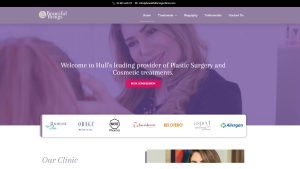For those first starting out, the Facebook ads interface can be a little scary and can seem like something difficult to understand, let alone start making money from, but thankfully, the reality is much simpler than it seems. In the following article, I’ll share a few tips and tricks that might make the Facebook ads interface seem a whole lot easier to use.
First, a key issue that many people encounter is undefined or chaotic audiences profiles. If you’re new to Facebook ads, it may seem like a good idea to target a number of audiences at once with a single campaign – an easy and quick way to attract lots of people, right? Well, not exactly. By stacking too many audiences or being incredibly broad with your selection (eg, stacking unrelated metrics), it’s hard to see what exactly is actually providing you with the best results. If you separate them out, you can ensure that you fully understand what’s happening and who is being attracted by each ad. Furthermore, you need to ensure your copy is tailored to the audience you’re writing for; it doesn’t need to be perfect but if you read back each sentence and think ‘what is in this for my audience’ then you can ensure you’re creating work that appeals to the right people.
It’s also important to make sure that the audiences you select are appropriate and fit for purpose; for example, you don’t want to target interests that are too narrow or heavily defined and exclude people who may have been perfect customers. Similarly, if you target audiences that are too obvious then you may limit yourself to people that your competitors are going for too – by thinking outside the box and looking for people with related interests to your product then you’re likely to find some hidden gems. In addition to this, consumer behaviour is also worth keeping in mind – if you’re selling to a high end audience, building credibility beforehand is essential if you’re hoping to charge premium prices for your product.
A second point is making sure that your campaign is set up with your understanding in mind so that you can see how things are performing. When first creating your campaign, it’s imperative to make sure you’re naming things in an effective way so that when you look back, you aren’t lost or overwhelmed in a sea of files. Simple but effective titles – Interests Campaign | March 2022 | – do the job perfectly.
You also want to make sure that you understand the objectives of your campaign – it’s always better to focus on your ultimate goal over anything else so if you’re looking for leads or purchases then you should focus on conversions instead of using a campaign that targets clicks. Ultimately it doesn’t matter if you got 10 clicks or 10,000 if the product isn’t selling. By being deliberate with the targeting and objectives that you select, you can be sure to optimise the traffic you receive right from the off and focus on receiving the highest quality clicks that are more likely to translate into conversions. As you go along, be sure to keep optimising your work – with these techniques, it should be clear to see how things are performing and it’s easy to change elements that aren’t performing like they should (yes, even that old audience that you set up in 2019!).
Thirdly, test test test! From not maximising your visuals by sticking with the same old thing, to landing pages that take a lifetime to open, and beyond, there are lots of small mistakes that can impact your ads performance and there is no way to know if a campaign is performing to its full potential than testing to find out. If an ad is set up correctly then it will have some good days, bad days, and days that are just okay and that’s absolutely fine – even on your worst days, Facebook is still collecting data that can inform your campaign. When first creating a campaign, give it around 5 days to check its performance and be sure to provide an adequate budget so it has a fighting chance (even if this means running fewer campaigns if you have a small budget). It’s also a good idea to leave CBO off to begin with, just whilst you understand which headlines, copy, images, and the like work best with what you’re doing.
To conclude, Facebook ads can be a tricky beast to master but there’s plenty of fairly simple and easy ways that you can maximise your success whilst using the platform. And for anyone still struggling after reading our handy tips, we are here to help.



